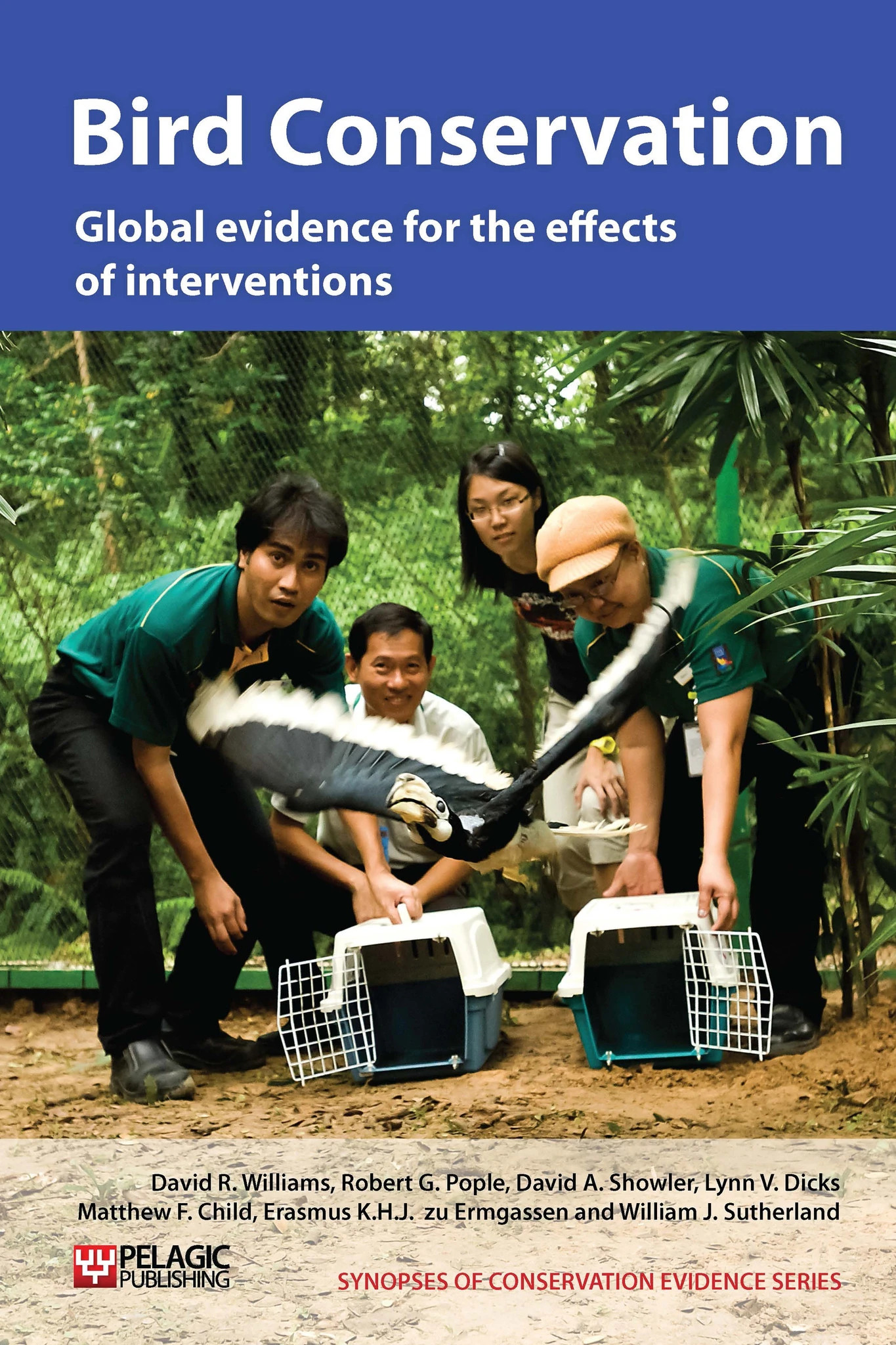Apply herbicide to mid- and understorey vegetation
-
Overall effectiveness category Likely to be ineffective or harmful
-
Number of studies: 7
View assessment score
Hide assessment score
How is the evidence assessed?
-
Effectiveness
20% -
Certainty
50% -
Harms
60%
Study locations
Supporting evidence from individual studies
A replicated, controlled before-and-after study in 1966-1969 in common sagebrush Artemisia tridentata shrublands in central Montana, USA (Best 1972), found that the number of breeding pairs of Brewer's sparrow Spizella breweri declined by 54% on plots completely sprayed with herbicide in 1968 (from 0.8 pairs/ha to 0.4). Vesper sparrows Pooecetes gramineus showed no response to herbicide, and neither species showed any changes on plots subject to strip spraying, partial spraying or on control plots. Plant foods (mostly grass seed) represented a greater portion, and invertebrate food a smaller portion, of both sparrow species diets on the sprayed than the unsprayed area.
Study and other actions testedA replicated, controlled before-and-after study in 1968-1970 in common sagebrush shrubland in central Montana, USA (Wallestad 1975), found that the number of strutting male greater sage grouse Centrocercus urophasianus increased by 28% at three lekking sites within 0.5 km of areas treated with herbicide and mechanical clearing, whilst numbers fell by 63% at a fourth site. Numbers increased by 323% at two leks more than 4 km from treated areas. In June 1968, three areas (totalling 705 ha) (each with a lek within 0.5 km) were treated with herbicide (2,4-Dichlorophenoxyacetic acid) or mechanically cleared in alternate strips. A fourth area (441 ha) within 0.5 km of a lek was treated in June 1970.
Study and other actions testedA study in mixed pine Pinus spp. forests in 1985-1996 in South Carolina, USA (Franzreb 1997) found that a population of red-cockaded woodpeckers Picoides borealis increased following the application of herbicides to midstory vegetation amongst other interventions. The authors emphasise that hardwood midstory control using cutting and herbicides and prescribed burning mimicked the natural fire regime and was essential to the success of the project. The results of this study are discussed in more detail in ‘Use prescribed burning’.
Study and other actions testedA replicated, controlled study from May-July in 1992-1995 in three replicate plots of mixed forest in British Columbia, Canada (Easton & Martin 1998), found that bird species richness and abundance became more homogeneous after herbicide treatment of deciduous vegetation (with cut stems sprayed with glyphosate). Bird species richness declined by 25% and 11% in herbicide-treated and control sites respectively. Abundance of birds increased annually (no significant differences between the control and treated areas) due primarily to significant increases in numbers of common species. Herbicide-treated areas showed a greater turnover of bird species. Nesting success was lower in herbicide-treated areas (8%) than in control areas (28%). Treatments reduced the volume of deciduous trees by 90-96% by removing deciduous trees within 1 m of conifer seedlings, or that were 1 m taller than nearby conifers.
Study and other actions testedA replicated, randomised, controlled study from 1992-1995 in nine 11-22 year old regenerating coniferous plantations (22-47 ha) in British Columbia, Canada (Easton & Martin 2002), found that bird nesting density and success was lower in areas with manual control of vegetation and herbicide application, compared to control areas (45 nests and 12% success in treatment areas vs. 79 nests and 18% success in controls). Overall, density and success increased with increasing area of deciduous vegetation remnants. Three years after treatment removed 90-96% of deciduous vegetation, experimental areas still had few deciduous trees, compared to controls.
Study and other actions testedA controlled study within a loblolly pine Pinus taeda plantation in Louisiana, USA, in 2003-2005 (Burke et al. 2006) found that northern bobwhite Colinus virginianus chicks were significantly more likely to successfully capture arthropods in areas of forest that were both burned and treated with imazapyr herbicide, compared to areas that were burned, mown or control areas. Arthropod abundance (a measure of brood habitat quality) was also highest in burned and herbicide-treated areas.
Study and other actions testedA replicated, controlled before-and-after study in riparian forest along the Middle Rio Grande, New Mexico, USA (Smith et al. 2009), found that black-chinned hummingbird Archilochus alexandri nest survival was lower after fuel reduction treatments, including the application of herbicide to exotic shrubs, but did not fall in control plots.
Study and other actions tested
Where has this evidence come from?
List of journals searched by synopsis
All the journals searched for all synopses
This Action forms part of the Action Synopsis:
Bird Conservation
Bird Conservation - Published 2013
Bird Synopsis





)_2023.JPG)














